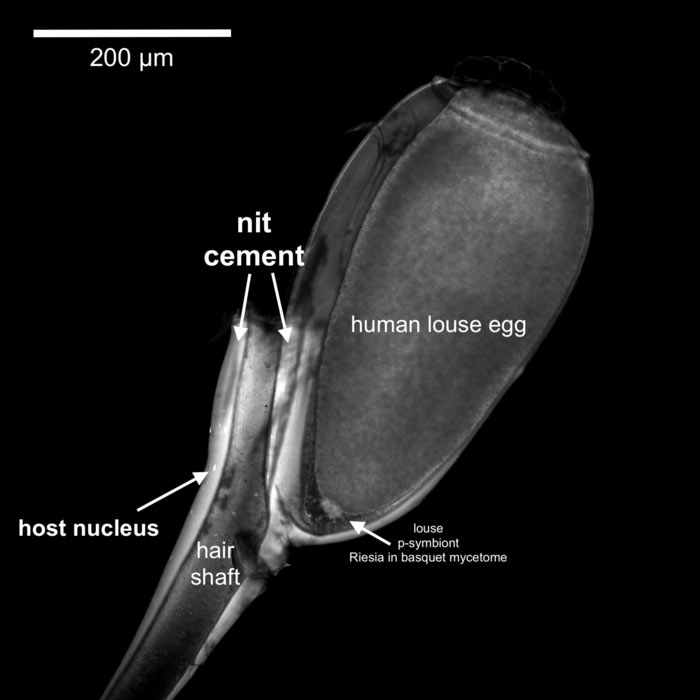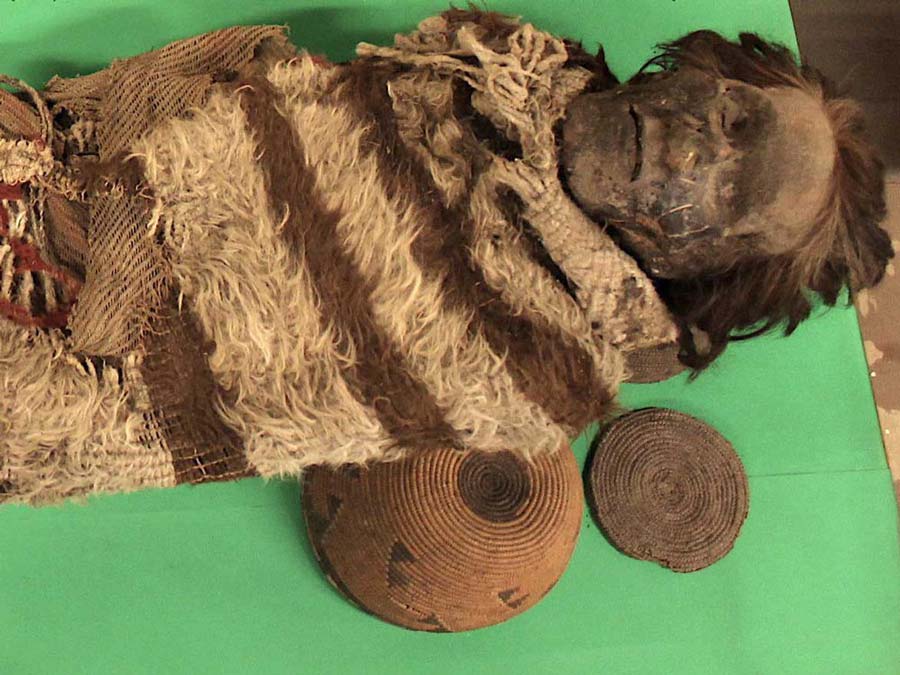Head Lice on South American Mummies Shed Light on Ancient Virus Spread
The scientific understanding of ancient South American ancestry and the future of DNA research just got a whole lot clearer thanks to mummy hair lice. Two thousand years ago the pre-Columbian Ansilta culture thrived in the western Argentine province of San Juan, which is famous for its towering peak of Cerro Mercedario that dominates the Andes near the Chilean border. A team of scientists has recovered DNA from the scalps of these mummies, which was found trapped in the cement produced by female lice for attaching nits (eggs) to hair. This new study, published in the Molecular Biology and Evolution journal, has not only revealed deep new insights into pre-Columbian human migration patterns in South America, but it has provided fresh data on the spread of ancient viruses.

The recent mummy head lice study relied on human hair with a nit (egg) attached to it by lice cement. (University of Reading)
Mummy Head Lice Implications: A Jurassic-Park-like Discovery
Using mummy head lice cement gathered from South American mummified remains dating back 1,500-2,000 years, the study’s new analysis technique can now be used when recovered bodies are void of teeth and bones. The new study was published by an international team of researchers led by Dr. Alejandra Perotti, Associate Professor in Invertebrate Biology at the University of Reading. The research was assisted by scientists from the National University of San Juan, Argentina, Bangor University, Wales, the Oxford University Museum of Natural History, England, and the University of Copenhagen, Denmark.
- Where the West Actually Meets the East—The Tarim Mummies
- Ancient Medicinal Knowledge of Amazon Tribes to Be Recorded in Writing for First Time in History
Until the development of this new way of analyzing ancient DNA, archaeologists were restricted to samples gathered only from bone or tooth fragments. The new DNA technique was useful because most of the sampled mummies were exposed to extremely cold temperatures when they died. Lice depend on the host's head heat to gestate their eggs and they lay their eggs closer to the human scalp in colder environments, where they are better preserved.
Dr. Alejandra Perotti said, “demand for DNA samples from ancient human remains has grown in recent years” as scientific teams are more often looking at “migration and diversity in ancient human populations.” Recovering DNA from head lice cement is the perfect solution to this problem of rising scientific demand. Furthermore, the fact that nits are found on the hair and clothes of well preserved and mummified ancient humans, means there will be less need to exhume entire cemeteries looking for rare DNA-holding bone and tooth samples. For obvious reasons, South American indigenous peoples have often had issues with foreign researchers messing up their ancestors' graves in the name of science.

Human louse nit showing the cement covering the egg shell and hair shaft, including a human cell (nucleus, arrow). (University of Reading)
Mapping Human and Nit Migration Patterns
Lead author of the new study, Dr. Mikkel Winther Pedersen from the GLOBE Institute at the University of Copenhagen, told Smithsonian Mag that the DNA yield from these nit cements was really high. He said it was “striking” that such small amounts of nits could still give us “all this information about who these ancient people were.”
Analysis of the recovered DNA from nit cement revealed a genetic link between three of the mummies and humans in Amazonia around 2,000 years ago. This demonstrated that the original population of Argentina’s San Juan province had migrated from the Amazon. Furthermore, the migration pattern of human lice was mapped from the North Amazonian plains towards Central West Argentina (San Juan Andes).

It is amazing to think that a head louse like this one can tell us about human migration and disease patterns from thousands of years ago! (Gilles San Martin / CC BY-SA 2.0)
Ancient Nits Reveal Long-lost Virological Secrets
The study also included nits from a Chilean textile and from a shrunken head from the Jivaroan people of the Ecuadorian Amazon. Not only did the new study chart the movement of the Ansilta culture, but it also demonstrated how the lice related to other lice species. It “also gave us hints to possible viral diseases,” added Dr. Mikkel Winther.
- Hacking the Ancient Binary Cosmic Codes of the Inca’s Woven Textiles
- Dressed to Kill: The Vibrant Textiles Adorning these Incan Mummies Have a Lethal Secret
In 2008, the earliest direct evidence of “Merkel cell Polyomavirus” was found in the DNA trapped in nit cement from one of the mummies. This virus is known to cause skin cancer, and the new discovery opens up the possibility that mummy head lice spread the virus among ancient populations. Dr Pedersen concluded that the hunt for alternative sources of ancient human DNA might now have ended, but he thinks further future studies are required “before we really unravel this potential.”
Top image: A roughly 2000-year-old mummified man of the Ansilta culture, from the Andes of San Juan, Argentina, had lice eggs and cement in his hair which preserved his own DNA. Source: Universidad Nacional de San Juan
By Ashley Cowie

















